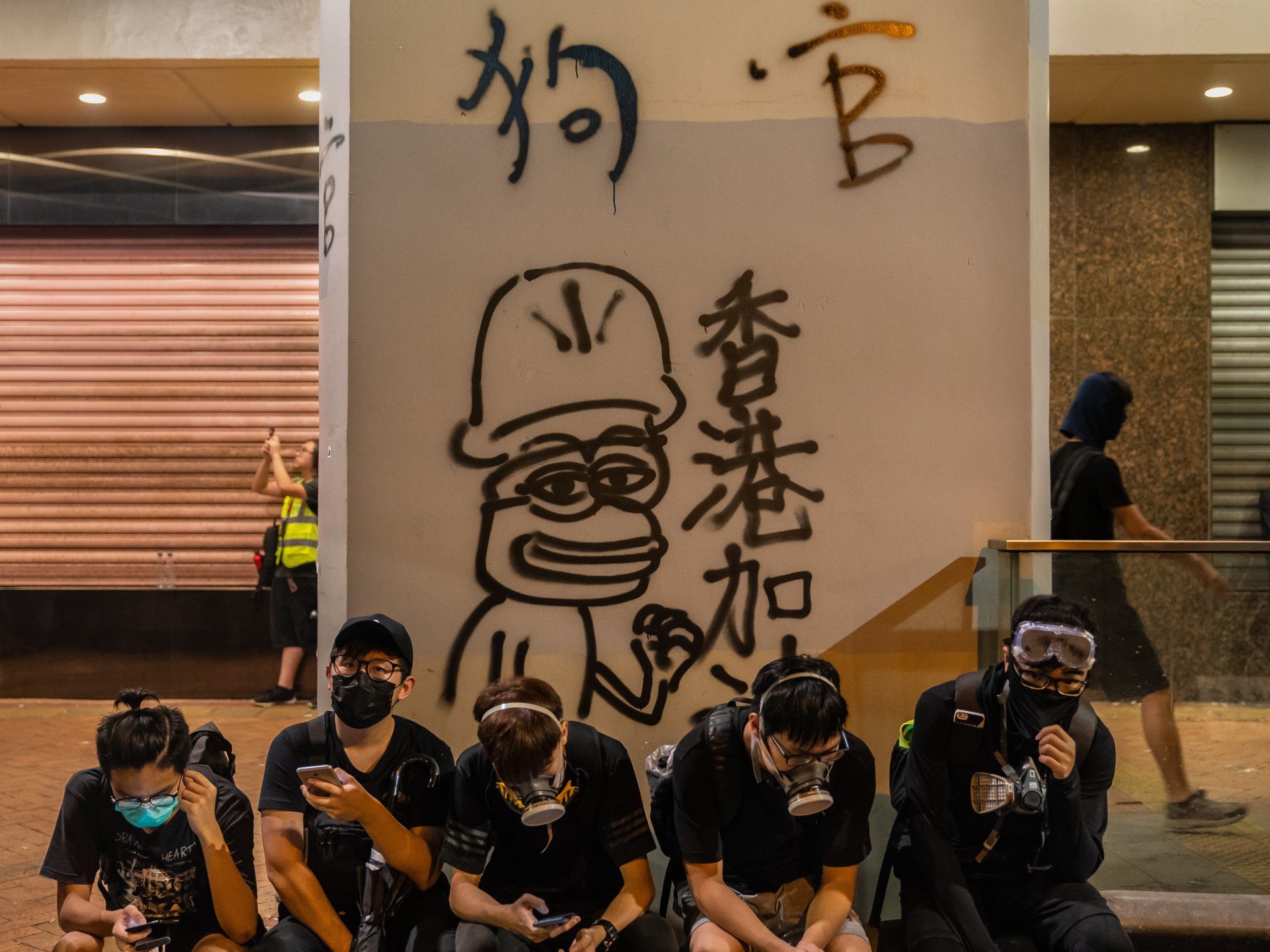
The cartoon frog with the bulging eyes and wide smile has, for years, been associated with America's alt-right — a symbol of racism and hate as the country continues to grow more divided. In 2016, Pepe the Frog was officially listed as a hate symbol by the Anti-Defamation League, as the character gained prominence on sites like 4chan and became increasingly associated with anti-Semitism and bigotry.
Comment: The Western press, along with the ADL, the SPLC and any number of other leftist organizations, have never understood Pepe the Frog. Pepe is a meme, used by thousands, if not millions of people for any number of jokes or political commentaries. Just because a small percentage (vanishingly small at that) of memes featuring Pepe are used by the alt right doesn't make the meme itself alt right. If the alt right started featuring Superman in their memes, would that make Superman alt right?
Matt Furie, the artist behind Pepe the Frog, went so far as to "kill off" his creation in a 2017 comic strip, in an attempt to rebuke the far-right's transformation of the character. In a Time magazine essay, Furie wrote that "a once peaceful frog-dude from my comic book," was morphed by racists and anti-Semites into "an icon of hate." He concluded the essay arguing that "I, the creator, say that Pepe is love."
In Hong Kong, however, protesters have another idea of what Pepe the Frog represents: for them, he is a pro-democracy freedom fighter siding with the masses as they take on mainland China — a vastly different identity compared to what the character is viewed as by many across the Pacific.
So, why have Hong Kongers adopted the controversial frog?
A New York Times article published on Monday explored that question, with reporter Daniel Victor suggesting that many protesters "had no idea about the symbol's racist connotations elsewhere in the world. They just like him." He added that, at least online, when Hong Kongers do discuss the negative connotations surrounding the character, they largely shrug it off.
Comment: Perhaps the protesters are taking the meme at face value, as they should, unaffected by the liberal western media's spin. It's quite possible to have seen thousands of iterations of the meme without ever having come across a racist version.
"Different countries have very different cultures," suggested 20-year-old Hong Konger Emily Yeung, in an interview with Victor. "Symbols and colors that mean something in one culture can mean something completely different in another culture, so I think if Americans are really offended by this, we should explain to them what it means to us."
As the Hong Kong protests picked up this summer, Pepe the Frog became a common symbol across the city — his face emblazoned on stickers, walls, backpacks, and within the abyss of social media. He was directly on the front line with protesters, sympathetic to their struggles and devoted to their cause. In a Reddit thread titled "Take Pepe back!" a user wrote "In Hong Kong Pepe is not at all associated with Trump... the original artist didn't want Pepe to be used like that. So let's try to make baby steps."
Hongkonger Paper Chu told the South China Morning Post that she "originally liked [Pepe] for his irreverence, which feels very in sync with the attitude of the Hong Kong people. But having him as part of the anti-extradition movement, as the face of it, feels appropriate."
That's a sentiment felt across the board, it seems: as one person wrote on LIHKG, an anonymous messaging board for protesters, "it has nothing to do with the far-right ideology in the state... it just looks funny and captures the hearts of so many youngsters. It is a symbol of youth participation in this movement," according to a Times translation of the forum.
Mari Law, a 33-year-old protester, told the New York Times that similar to the hundreds of thousands of them who continue to take to the streets demanding greater democracy and government accountability, the cartoon frog is just sad.
The protesters want change, and they want the Chinese government to take their demands seriously.
Pepe the Frog, the character who for years has been aligned with the far-right and anti-Semitism, may, in their minds, be just the "frog-dude" to keep that dream alive.



Comment: Here's Jordan Peterson talking to Joe Rogan about the wider implications of the Pepe meme:
See also: